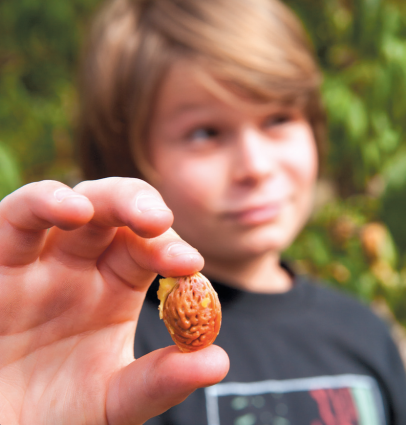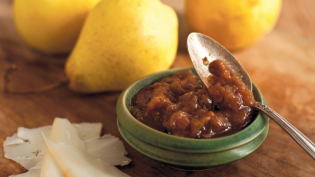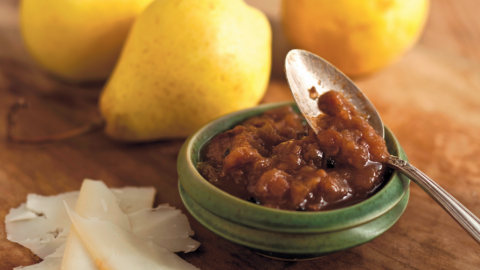Preserving the Season
As a child, I loved picking plums at my grandmother’s house, then making jam with her and sticking the cloves into the fruit for her pickled peaches. When it came to actually eating, however, I preferred store-bought jams and canned fruit with proper labels, like the other kids had at home. There was something embarrassing about my grandmother’s hand-written, dated labels and the glass jars with their metal-ringed lids, as if we were too poor to buy “real food” and so had to make our own.
That wasn’t really the case. My grandmother just liked to preserve the season, so she could eat peaches whenever she wanted them, and since she had fruit trees of just about every kind, why would she want to buy somebody else’s canned fruit in December? To her, it was simply logical.
After my grandmother died, my mother carried on for a few years, making the pickled peaches, carving away the bright red watermelon flesh to make the sweet watermelon rind preserves she liked to serve with pork roasts and canning the apricots from our tree. Like my grandmother, she could can with the best. However, as with her clothes, my mother preferred store-bought, even though she was a wonderful seamstress and made all my high school prom dresses.
Both of them would shake their heads today to see that something they did routinely is now in vogue, with omnipresent canning and preserving books and classes, and people—even restaurant chefs—priding themselves on serving homemade pickles, preserves, jams, jellies, ketchup and mustards, as well as other condiments.
When I moved to France during my late 20s, I was enthralled by French culture and its ways with food, and I gained a whole new perspective on homemade preserves and canned fruits and vegetables. My neighbors, like my grandmother, preserved the very best, the most special of what was in season. Along with the standard plums, peaches and cherries, this included, among many other things, the more exotic quince, eggplant and mushrooms.
My French neighbors relied—and still do—on year-round potagers, or kitchen gardens, so there was always something fresh and in-season coming into the family kitchen. There was no need to can enough food during summer and fall to see them through the barren months, because there were no barren months. So, with the exception of tomatoes—which were canned in huge quantity—only a selection of the season’s best was preserved.
As I have continued to return to my house in France over the years, I always look forward to my neighbors’ homemade preserves, knowing as I do where they came from and how they were harvested. If I’m there at the perfect moment in fall, I help with preparing (and gathering) the mushrooms or eggplants for pickling.
At home in California, in fall I invite friends and family to prepare quince and figs from my trees with me, and make sauce from the last of summer’s tomatoes. And, I make a few jars of pickled peaches and watermelon rind preserves to serve to my children and grandchildren in honor of those who have gone before me—handing down, I hope, a sense of taste and remembrance.






